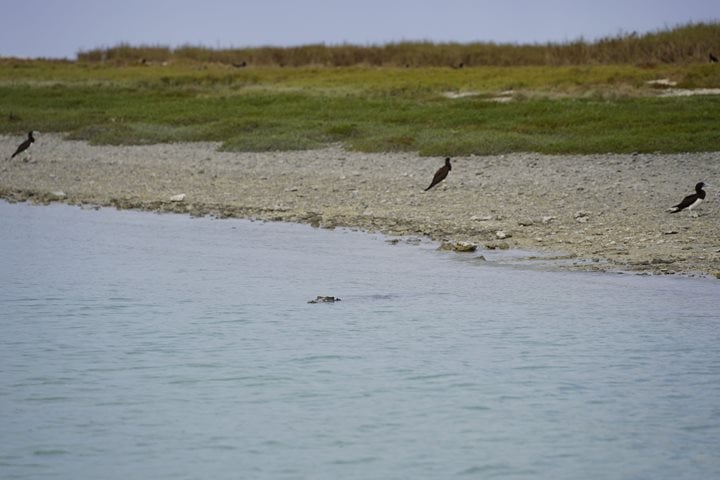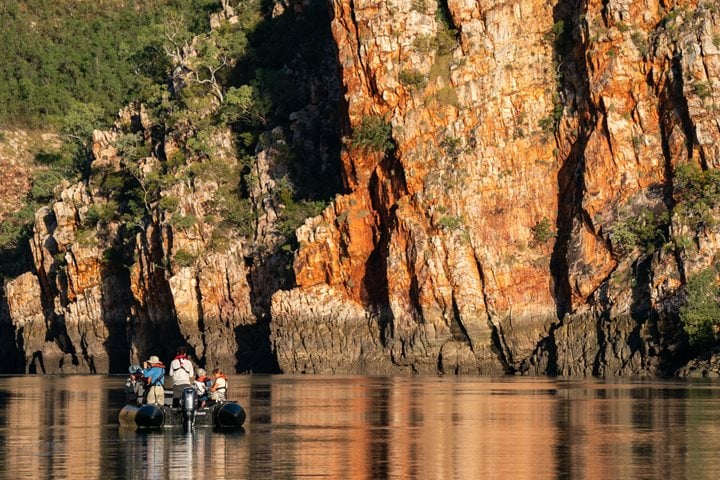As dawn broke at the magnificent Kimberley Coast, the National Geographic Orion made its way into the vast Vansittart Bay. It was the beginning of a special and exciting day. We had the exceptional opportunity to sight the mysterious and ancient Bradshaw, or Gwion Gwion, rock art. In the morning, naturalist Cristiana Damiano lectured about the intriguing types of rock art found around the Kimberley region. This informative talk awakened our curiosity as we headed to our first Zodiac expedition destined to Jar Island.
This picturesque and rugged island holds many secrets. After a short and accessible walk through a sandstone path, we were fortunate to discover and contemplate a few of them. We visited two main galleries where different styles of rock art can be observed. Bradshaw figures are the most extensive primitive rock drawings in the world. Depicting elongated human figures dissimilar from Aboriginal art found throughout the Kimberley, the Bradshaw figures were named after the English pastoralist and explorer, Joseph Bradshaw. He made the discovery in 1891 whilst traversing the Prince Regent River area, searching for suitable pastures. The Bradshaw figures are usually mulberry in colour and appear to be impregnated into the rock rather than painted on. They are very detailed depicting males in ceremonial dress. On occasion, pronounced breasts on either side of the figure identify rarely sighted female figures. Numerous tassel shaped ornaments are evident depicting hair. Dating the rock art has proved difficult and controversial. In 1996, a technique using optically stimulated luminescence to date fossilized mud wasp nests that were built over Bradshaw figures showed the nests to be 17000 to 22000 years old. This finding provides a minimum age dating back to the last ice age. In many cases, Wandjina art has been painted over Bradshaw art and have only been revealed when the ochre peels off the rock surface. Explorer and art examiner Grahame Walsh systematically documented the paintings and recorded the legends and historic incidents, relevant to significant rock art regions of Australia.
After this amazing and unique art sighting opportunity, a delicious lunch was savoured on deck. Following a deserved rest, we headed to our second adventure. It was time to visit the C-53 plane wreckage, a representative of World War II history. The plane is located at Anjo Peninsula. On February 1942, during a return flight from Perth to Broome, the pilot made a navigational error and crash-landed on a salt pan. No lives were lost and all crew members were rescued.
The day ended with a mouth-watering traditional Australian barbeque, with delighted and elated guests after another amazing experience in the spectacular Kimberley region.







